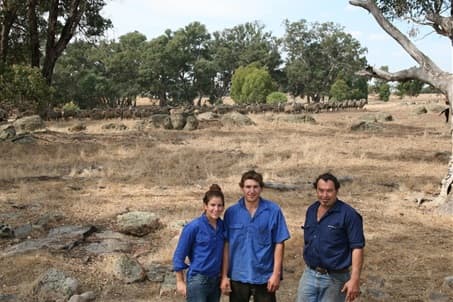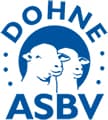Sheep and cropping works best
By Trinity Edwards | 27th April 2014 | Farm Weekly
USING some of the best management tools available in the sheep industry has aided passionate farmers Nigel Harding, son Luke and his fiancé Jess Hayes to recently expand and run a profitable operation in Boyup Brook.
After a short stint in Darkan, Mr Harding’s parents bought the 400 hectare Boyup Brook home property, Park Hills, in 1960 and Nigel, along with his brother John, began breeding AMS fine wool Merinos.
A strong focus on micron testing over the past 15 years as well as worm control has seen the flock expanded to 2900, of which 400 are joined to Dohne rams.
Mr Harding said they were mating a number of Merino ewes to Border Leicester rams but they had too many eye problems and despite being in a reliable rainfall area, the F1 ewes would fall away in condition when there was no green feed around.
“In more recent years we have made the switch to Dohne rams and have found the F1 crossbreds to be much hardier sheep with good frame and excellent mothering abilities,” he said.
“We purchase our Dohne rams from the Far Valley and Capercup studs.”
The F1 Dohnes are mated to White Suffolk rams which are bred from Luke and Ms Hayes’ small Burra Park White Suffolk stud.
“After a brief discussion about starting a stud we soon found ourselves at the Nalvin Park dispersal where we ended up buying 40 stud ewes,” Luke said.
“Jess selected four as donors and with the help from Simon Bell, Breedtech, Kojonup, the first embryos have been implanted into a proportion of our F1 Dohnes which are due to lamb with the remaining flock from June 1.”
In the first week of January all the rams are joined for a five-week period, with the wether teasers being put in two weeks prior to encourage synchronisation.
After a three-year break in pregnancy scanning, the Hardings decided to scan again this season and as a result were reassured their conception rates are still high with only 60 out of the 1500 ewes scanning empty on the home property.
“We have always obtained high conception rates and lambing percentages and I strongly believe it is due to the intensive three-year worm trial we completed with the Department of Agriculture and Food,” Mr Harding said.











 Facebook
Facebook YouTube
YouTube Instagram
Instagram